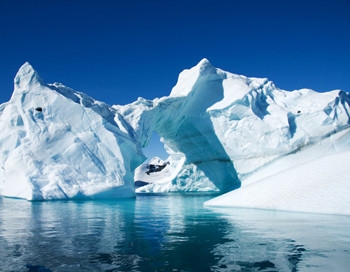
Could it be that drastic water shortage was the reason for the mastodons' epic migrations? Another big piece of this puzzle lies far out to sea.
会不会是因为极度缺水使得乳齿象进行了这么长距离的迁徙?这个谜团的另一条线索位于海洋深处。
This is the ocean floor. But this isn't rock sprouting out at the bottom. It's wood. It's the remains of prehistoric tree stumps, some dated at more than 12,000 years old.
这就是大洋底。但是它的形成却不是因为底部地壳的挤压。这些都是木头,是史前时期树桩的化石,其中的一些可以追溯到12000多年前。
This sunken forest is unmistakable evidence that what is now seabed was once dry ground. And what is now Florida's coastline was once many miles in land. But why? To answer that, we have to go back to the mighty ice age glaciers that covered almost half the continent.
很明显,这些沉入海底的树林可以证明,这片大洋底所处的位置曾经是片干地。现在佛罗里达的海岸线曾经都是数英里的陆地。但这又是为什么?为了回答这一问题,我们需要回到冰河时代,看看覆盖了半片大陆的大冰期冰川。
These glaciers contained immeasurable amounts of ice. So much water was locked up in this ice that it lowered sea levels by over 70 meters. The southeast coastal shelf was exposed and Florida doubled in size. The Everglades were dry land.
这些冰川蕴含的冰的数量无法估量。这些冰川中贮存着大量的水,因此,那时的海平面比现在低70多米。东南部的沿海大陆架还处于地表之上,而佛罗里达的面积也是现在的两倍大。那时的大沼泽地还是一片干燥的陆地。
英文文本来自普特英语,译文属可可原创,仅供学习交流使用,未经许可不得转载。












